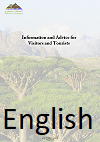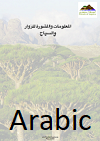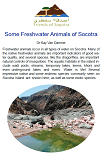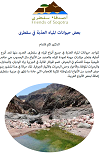General information
|
This site provides general information about the people and environment of Soqotra, now a UNESCO World Heritage Site, as well as about the challenges posed by rapid development.
Friends of Soqotra have been in close contact with many different institutions and individuals concerned with the
Archipelago over the years, and this has made possible the exchange and continual updating of information. Our thanks to all those who have contributed in the past and to all future contributors!
Inhabitants and culture The environment and biodiversity of a UNESCO World Heritage Site |
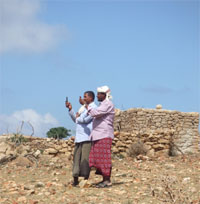 |
Map of the Soqotra Archipelago
by Roderic Dutton, Miranda Morris and Diccon Alexander (FOS)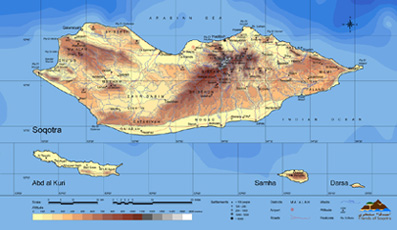
Inhabitants and culture
By Miranda MorrisSt. Andrews University
|
The Soqotra Archipelago consists of four islands and several sea stacks. Three of the islands, Soqotra (3,650 sq. km in area), ‘Abd-al Kuri (133 sq. km) and Samha (41 sq. km) are inhabited. The fourth and smallest island, Darsa, lies about 17 km east of Samha, and is uninhabited, though overrun with rats, as well as being home to great numbers of small crabs and clouds of seabirds.
|
|
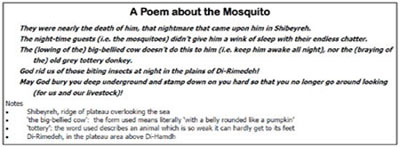 |
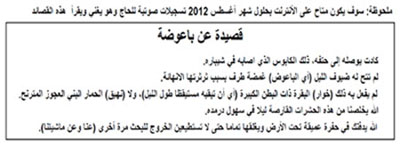 |
|
Traditionally the islanders lived by fishing, date-palm cultivation and animal husbandry, rearing goats, sheep and cattle for meat and milk, and donkeys and camels as pack animals. They traded butter-oil, salted and dried fish, various plant products and sheepswool cloth for the necessities they were unable to produce themselves. In recent decades they also relied on seasonal out-migration as labourers to the Arabian mainland as a source of income. Now they increasingly find employment in various government ministries (as policemen, soldiers, teachers, office and health workers etc.). Complex traditional rules which governed the management of livestock, access to pasture, water and dry season fodders, and which also controlled exploitation of the flora and fauna, were instrumental in maintaining the rich biodiversity of the islands. That the Soqotra Archipelago has been declared one of the world’s most important island groups, with a flora and fauna of global significance, demonstrates the success of the islander’s management of their natural resources.
|
|
The environment and biodiversity of a UNESCO World Heritage Site
By Kay Van DammeSenckenberg Institute Frankfurt a.M.
|
The Soqotra Archipelago is inscribed as a UNESCO Natural World Heritage Site since 2008 based on one criterion only (x), its outstanding biological diversity. The inclusion in the World Heritage List is a global recognition of the unique and rich biodiversity of Soqotra and the importance of its conservation, aiding to protect the current life that is a result of up to several millions of years of evolution and local radiations, combined with a diversity in habitats, ranging from coastal dunes to majestuous granite mountains, and human-mediated landscapes.
|
|
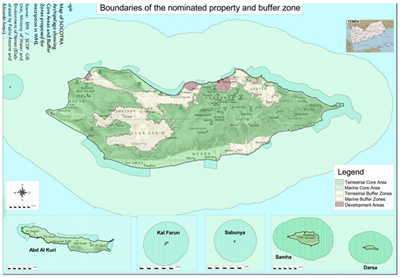 |
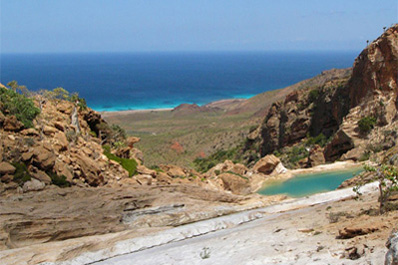 |
|
The challenges to the biodiversity of the Soqotra Archipelago and hence to the integrity of the UNESCO World Heritage property are varied and depend on natural as well as human-mediated factors. Soqotra may well lose it’s inscription on the World Heritage List or be a WHS in danger, which would have an impact on conservation efforts. General natural challenges include climate change/effects, such as the El Niño effect resulting in devastating local impacts of the cyclones Chapala and Megh in November 2015. Other challenges that are responsible for loss of biodiversity on other islands include (a) habitat degradation/land degradation, closely linked to land use as well as to climate, (b) exotic and invasive species, introduced by man, (c) unsustainable development and direct habitat destruction, and (d) the waning of sustainable resource use through traditional practices. On a small Archipelago like Soqotra, the many challenges to man and environment are closely related, and impacts on nature affect the inhabitants whom depend on the ecosystems for survival, and vice versa, the impacts on local people affect the environment.
|
|
